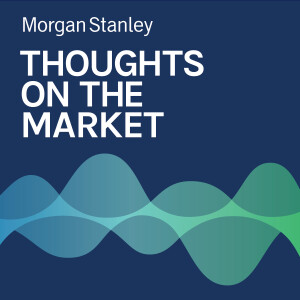
While equity markets continue to rally, the key to the end of the bear market may be in the fundamentals.
----- Transcript -----
Welcome to Thoughts on the Market. I'm Mike Wilson, Chief Investment Officer and Chief U.S. Equity Strategist for Morgan Stanley. Along with my colleagues, bringing you a variety of perspectives, I'll be talking about the latest trends in the financial marketplace. It's Monday, March 6th at 2 p.m. in New York. So let's get after it.
Given our focus on the technicals in the short term, I'm going to provide an update on that view today, which contrasts with our intermediate term view that the bear market is not over. In short, equity markets traded right to technical support levels on Thursday last week and held. More importantly, they reacted strongly from those levels, which suggests this will not be a one day wonder, meaning the bear market rally may not be over yet.
While my comments will focus on the S&P 500, these observations apply to most of the other major indices as well: the Nasdaq, Russell 2000 and the Dow Industrials, which remains the weakest of the bunch. First, as already mentioned, the key support levels were tested twice over the past few weeks, but on Thursday equity prices reacted strongly around the second test. As a strategist, I respect the price action and need to incorporate it into our fundamental view, which remains bearish.
In addition to the strong rebound, the S&P 500 was able to recapture its uptrend from the rally that began in October. However, we did not observe any positive divergence on the second retest, and that leaves the door open that this rally may still be on borrowed time. We would point out that one of the reasons we called the rally in October had to do with the fact that we did get a very strong positive divergence on that secondary low in mid-October. For listeners who don't use technical analysis, a positive divergence is when markets make new price lows on less momentum. We measure momentum through price oscillators like relative strength or moving average convergence divergence.
The other thing we're watching closely from a tactical standpoint is the longer term uptrend that began after the financial crisis in 2009. We continue to think it is critical that the S&P 500 get back above it to confirm the cyclical bear market is over. This trend line has provided critical resistance and support over the past 14 years during the secular bull market. More recently, it has been more of a resistance line and that level comes in today at around 4150 on the S&P 500. While we think the S&P 500 could make another attempt at this key resistance, it will require two things to surmount it- lower 10 year U.S. Treasury yields and a weaker dollar. In fact, we think Friday's sharp fall in 10 year yields was an important driver of the bounce in stocks. The dollar, too, showed some signs of exhaustion and it would be helpful if it can decline more meaningfully. As we suggested last week, in the absence of a weaker dollar and lower yields, this bear market rally will likely fail once again. The bottom line, there is plenty of bullish and bearish fodder in the technicals in our view, and one will need to take a view on the fundamentals to decide this bear market for stocks is over. Our view remains the same, the bear market is not over, but we acknowledge that Friday's price action may push out the next leg lower for a few more weeks.
As we've been discussing on prior podcasts, the main reason we believe the bear market is not over is because the earnings recession has much further to go. Rather than repeating our case once again, we would like to highlight an important note published last week by Todd Castagno, our Global Valuation, Accounting and Tax team, appropriately entitled Exhausted Earnings. In this note, the team discusses their analysis of accruals and to what extent net income is diverging from cash flows. In short, the gap between reported earnings and cash flow is the widest in 25 years. This analysis supports our negative operating leverage thesis and means earnings estimates have a long way to fall over the next several quarters. Unfortunately, most stock valuations do not reflect this risk and why we think the risk reward for U.S. equities remains poor despite the positive price action last week.
Thanks for listening. If you enjoy Thoughts on the Market, please take a moment to rate and review us on the Apple Podcast app. It helps more people to find the show.
More Episodes
 2024-04-26
2024-04-26
 2024-04-23
2024-04-23
 2024-04-22
2024-04-22
 2024-04-19
2024-04-19
 2024-04-18
2024-04-18
 2024-04-17
2024-04-17
 2024-04-16
2024-04-16
 2024-04-16
2024-04-16
 2024-04-12
2024-04-12
 2024-04-09
2024-04-09
 2024-04-08
2024-04-08
 2024-04-05
2024-04-05
 2024-04-04
2024-04-04
 2024-04-03
2024-04-03
Create your
podcast in
minutes
- Full-featured podcast site
- Unlimited storage and bandwidth
- Comprehensive podcast stats
- Distribute to Apple Podcasts, Spotify, and more
- Make money with your podcast
It is Free
- Privacy Policy
- Cookie Policy
- Terms of Use
- Consent Preferences
- Copyright © 2015-2024 Podbean.com





